Promoting Energy Efficient Improved Cooking Stoves for Better Health in the North of Sri Lanka
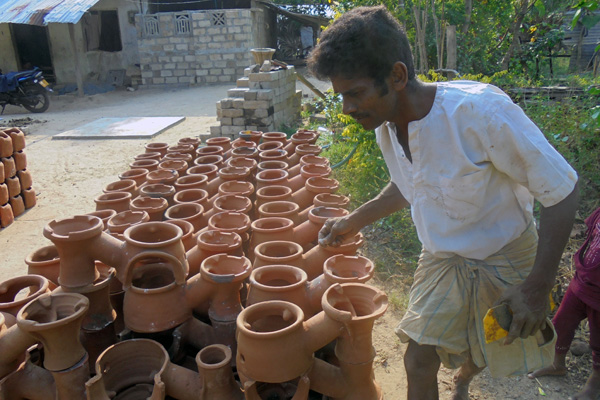
Stoves produced by Mr. Thureirasa Ratnakumar.
UN-Habitat is supporting conflict affected communities in over 380 villages in the North and East of Sri Lanka through housing and community infrastructure construction programmes. In most rural areas where the programme is being implemented, access to electricity, LP gas and even kerosene oil is limited. Hence, a majority of families depend on firewood as their basic energy source for cooking. The demand for firewood is increasing in the North, resulting in deforestation and other adverse impacts on the fragile environment. The current energy consumption pattern in rural areas also has serious implications on the health of women and children. Studies have found a high prevalence of respiratory tract-related and eye-related ailments among women, primarily due to excessive exposure to smoke while cooking. Additionally, women and young girls spend a lot of time collecting firewood from nearby forests.
The Improved Cooking Stoves (ICS) project was initiated by UN-Habitat to promote the use of energy efficient methods for cooking through the introduction of Anagi improved cooking stoves in selected villages in Kilinochchi and Mullaitivu. Commencing in March 2015, the project was implemented in 7 villages over a period of 3 months. UN-Habitat partnered with the Integrated Development Association (IDEA), a National Non-Governmental Organisation, to train potters and install Anagi stoves in households. The main project activities included training artisans to produce Anagi cooking stoves, improve their workshop facilities, train beneficiaries as promoters of the cooking stoves and train workers to install stoves in households.
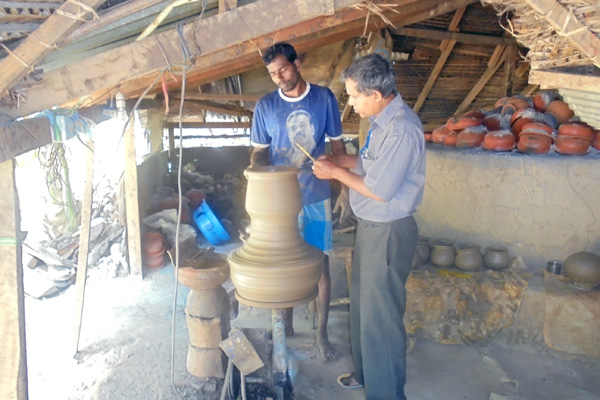
Mr. Tharman Jeyaranjan receives practical training.
Three potters were selected from the North who were then provided with theoretical and practical training on all aspects of producing Anagi ICS. The training included the special clay preparation, assembly of the different stove components and drying and firing of the stoves. They were given necessary moulds, templates and a comprehensive training manual to ensure correct dimensions of the stoves are maintained and produced according to approved standards stipulated by the Sri Lanka Standard Institution. The three potters are now able to produce Anagi stoves according to established industry standards. Their production capability was significantly improved through the provision by the project of necessary equipment and infrastructure.
Mr. Thureirasa Ratnakumar, a potter from Bharathipuram discussing the production of Anagi stoves, said “Earlier, my production capacity was limited, as I didn’t have a proper workshop or equipment. I used the kitchen for my pottery work. Through this project, I now have a workshop equipped with a motorised pottery wheel, a storage area and a kiln. I have already sold the 60 stoves I produced after the training”. Mr. Muttuveeran Balachandran from Tharmapuram, said “The introduction of the Anagi stove into the product mix has given me an additional source of income. I am confident that both wholesale and retail markets for these stoves will increase in the future”.
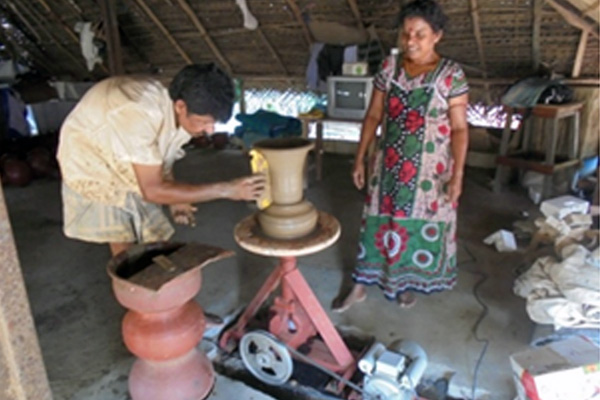
Mr. Muthuveeran Balachandran using the motorised pottery wheel.
The promoter training was conducted to facilitate promotion and coordination of the installation of Anagi stoves in selected households. Ms. S. Subajini, from Mullaitivu district, said “The promoter training programme was very useful to us. We improved our knowledge on the concept and benefits of improved cooking stoves. We undertook practical cooking tests using a traditional stove and an Anagi stove to experience the benefits of cooking with this stove”.
The installer training programme was targeted at training workers to install stoves in selected households. Subsequently, it is expected that the installers would work independently and use this activity to generate an additional income.
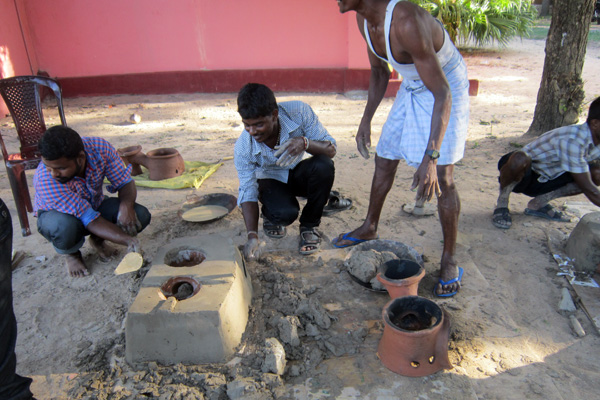
Training on installation of Anagi stoves.
Mrs. B. Ira, from Iyakkachchi in Kilinochchi, said “The Integrated Development Association demonstrated how to prepare the clay mixture and install the stoves. We were given hands-on training on stove installation and clay preparation methods that we installed in four houses. We were also given hands-on training on how to cook using an Anagi stove. The selected promotors were also given demonstrations on stove installations.”
Many promoters were able to coordinate the activities linking the beneficiary and the installer. During the project period, improved cooking stoves were distributed and installed in 330 households. Many families have expressed their satisfaction with the new cooking stoves. Mrs. T. Wasanthadevi, from Sivanagar, said “This stove uses less firewood than ordinary stoves and produces less smoke. It is a very healthy choice for household kitchens. I would encourage everyone to use this stove”.
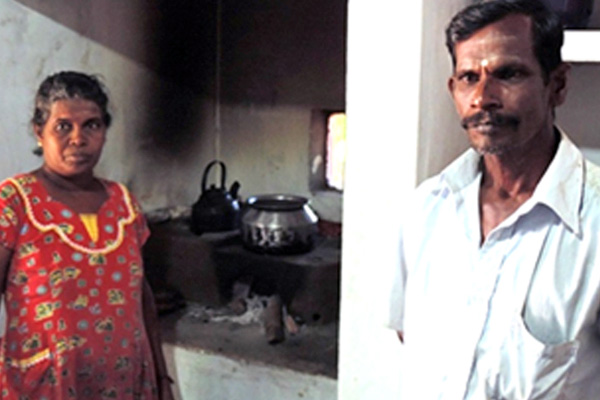
Mr. and Mrs. M. Somasundaram in their kitchen using the Anagi stove.
Ms. Yasodadevi Puwaneswaran from Manikkapuram said “I am very happy we were selected by the project. Cooking in this Anagi stove is very easy. Now I spend less time cooking. I can spend more time with my children now”.
The three trained artisans are now able to produce Anagi stoves according to established standards and have the potential of producing a minimum of 600 stoves per month. As the wholesale market of Anagi stoves has increased over the years, it is hoped that the training and infrastructure facilities provided by the project will help improve their productivity and monthly income and that thousands of households will benefit from the installation of Anagi improved cooking stoves in their homes.
